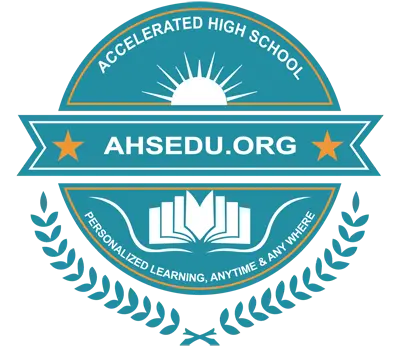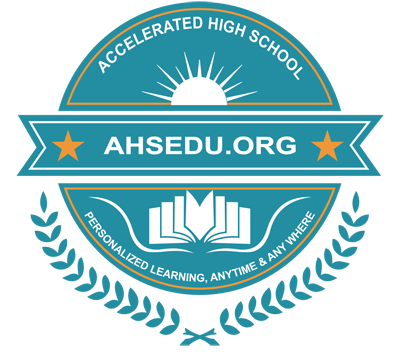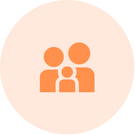9Accelerated High School
Standardized Curriculum of Computer Science-II
In the 21st century, computers and technology are a big part of our lives. Everyone needs to understand how computers work. Learning to solve problems with computers and create apps helps us think about important issues and find ways to make things better. This knowledge lets us join in on important conversations, like how to stay safe online and how to use technology to solve problems in our community and around the world.
Mission:
All students have equitable access to a rigorous computer science education. Students will benefit from opportunities to engage in high-quality technology programs that foster their ability to develop and apply computational thinking to address real-world problems and design creative solutions. All students participate in an inclusive and diverse computing culture that appreciates and incorporates perspectives from people of different genders, ethnicities, and abilities.
Vision:
Prepare grade 2 students to become technologically literate individuals who can effectively:
- Understand Basic Computer Concepts: Learn the basic parts of computers and the purpose of each component.
- Basic Word Processing Skills: Gain introductory skills in using word processing software.
- Shapes and Drawing Skills: Develop basic skills in creating shapes and drawings using computer software.
- Basics of Multimedia: Learn the fundamentals of multimedia, including audio, video, and images.
- Concept of Digital Citizenship: Understand the basics of digital citizenship, including online safety and responsible use of technology.
- Solve Critical Challenges Using Technology: Begin to explore how technology can be used to solve simple problems.
- Adapt to Rapidly Changing Technologies: Get introduced to the idea that technology is constantly changing and evolving.
- Engage in Discussions and Investigations: Participate in simple discussions and investigations about how technology works and how it can be used.
- Evaluate Digital Information Sources: Learn to look at different sources of digital information and think about what they mean.
- Communicate Technological Ideas: Start to communicate ideas about technology through simple reports, presentations, and digital projects.
This vision aims to equip grade 2 students with the foundational knowledge and skills necessary to begin their journey as well-educated, globally-minded individuals in a world where computing technology is essential.
Spirit and Intent:
At Accelerated High School (AHS), the skills we teach match important educational standards, like the New Jersey Student Learning Standards for Computer Science (NJSLS-CS) from 2023. We also follow standards for Career Readiness, Life Skills, and Personal Financial Literacy, as well as the New Jersey Preschool Teaching and Learning Expectations. This means that what you learn covers all the important computer science ideas and how to use them in real life. By following these standards, students get lots of practice questions designed to help them learn and master new skills effectively.
Three Dimensions of AHS Science Curriculum:
The performance expectations reflect the three dimensions and describe what students should know and be able to do. In layman’s terms, they are “the standards.” They are written as statements that can be used to guide assessment and allow for flexibility in the way that students can demonstrate proficiency. The example below is provided to illustrate the interconnected nature of the NJSLS-S components.
Computer Science Core Idea
|
Disciplinary Core Idea |
Performance Expectation |
|
Understand Basic Computer Concepts |
Identify different parts of a computer and their purposes. |
Computer Science and Engineering Practice
|
Computer Science and Engineering Practice |
Performance Expectation |
|
Engage in Discussions and Investigations |
Participate in computing and internet safety discussions. Conduct investigations to generate evidence-based claims. |
Crosscutting Concept
|
Crosscutting Concept |
Performance Expectation |
|
Adapt to New Technologies |
Learn about new technologies and how to use them. |
Becoming familiar with the basics of computer science is a crucial first step in designing learning experiences for second graders. Computer science skills for this age group include learning to think like a computer, working together, and solving simple problems. Important ideas include understanding simple concepts like patterns and steps in solving problems. To learn well according to the New Jersey Student Learning Standards for Computer Science (NJSLS-CS), students need activities that are fun, build on what they already know, and help them get better over time. These activities should go beyond just reading about computers and coding, giving students hands-on opportunities to understand and use what they learn. Building on what they learned before helps students remember and use their knowledge, while activities that help them practice and improve make learning exciting and meaningful.
Curriculum for Grade-II Computer Science:
Standard 1: Computing device
Learning objectives:
- Individuals use computing devices to perform a variety of tasks accurately and quickly.
- Individuals collect, use, and display data about individuals and the world around them.
- People work together to develop programs for a purpose, such as expressing ideas or addressing problems.
Topics of AHS-CS:
A. Introduction to Computers
- Understand the basic concept of computers.
- Identify the different parts of a computer (monitor, CPU, keyboard, mouse).
- Learn the purpose of each computer component.
Standard 2. Word processing
Learning Objectives:
- Computing devices interpret and follow the instructions they are given literally
- Individuals collect, use, and display data about individuals and the world around them.
- Computers store data that can be retrieved later. Data can be copied, stored in multiple locations, and retrieved.
- A sequence of steps can be expressed as an algorithm that a computer can process.
Topics of AHS-CS:
B. Basic Word Processing
- Introduce basic word processing skills.
- Learn how to create a document.
- Learn how to edit a document.
- Learn how to save a document.
- Practice using basic formatting options (font, size, color).
Standard 3. Shapes and Drawing
Learning Objectives:
- A computing system is composed of software.
- The development of a program involves identifying a sequence of events, goals, and expected outcomes, and addressing errors (when necessary).
- Computing devices interpret and follow the instructions they are given literally.
Topics of AHS-CS:
C. Basic Shapes and Drawing
- Introduce basic drawing and shape creation using drawing software.
- Explore tools for drawing shapes, lines, and colors.
- Encourage creativity by creating simple digital artwork.
Standard 4. Multimedia
Learning Objectives:
- People work together to develop programs for a purpose, such as expressing ideas or addressing problems.
- Technology has changed the way people live and work.
- Various tools can improve daily tasks and quality of life.
Topics of AHS-CS:
D. Introduction to Multimedia
- Explore the basics of multimedia (images, sounds, videos).
- Learn how to insert and manipulate multimedia elements in documents.
- Understand the concept of multimedia in educational and entertainment contexts.
Standard 5. Digital citizenship
Learning Objectives:
- Computing technology has positively and negatively changed the way individuals live and work (e.g., entertainment, communication, productivity tools).
- Computer networks can be used to connect individuals to other individuals, places, information, and ideas. The Internet enables individuals to connect with others worldwide.
- Connecting devices to a network or the Internet provides great benefits, but care must be taken to use authentication measures, such as strong passwords, to protect devices and information from unauthorized access.
Topics of AHS-CS:
E. Digital Citizenship
- Understand the concept of digital citizenship.
- Learn about responsible and ethical behavior online.
- Explore the importance of protecting personal information.
Standard 6. Coding
Learning Objectives:
- Computers follow precise sequences of steps that automate tasks
- Individuals develop and follow directions as part of daily life.
- A sequence of steps can be expressed as an algorithm a computer can process.
- Real-world information can be stored and manipulated in programs as data (e.g., numbers, words, colors, images).
Topics of AHS-CS:
F. Digital art
- Animated name
- Add sprite
- Add a backdrop
- Animate a sprite
- Add effects to Sprite
Standard 7. Programming Language
Learning Objective
- Individuals develop and follow directions as part of daily life.
- The program development involves identifying a sequence of events, goals, and expected outcomes, and addressing errors (when necessary).
- A sequence of steps can be expressed as an algorithm a computer can process.
- Computers follow precise sequences of steps that automate tasks.
- Real-world information can be stored and manipulated in programs as data (e.g., numbers, words, colors, images).
- Computers follow precise sequences of steps that automate tasks.
- Programming languages provide variables, which are used to store and modify data.
- Programs can be broken down into smaller parts to facilitate their design, implementation, and review. Programs can also be created by incorporating smaller portions of programs that already exist.
- Individuals develop programs using an iterative process involving design, implementation, testing, and review.
Topics of AHS-CS:
G. Programming Language
- Java







